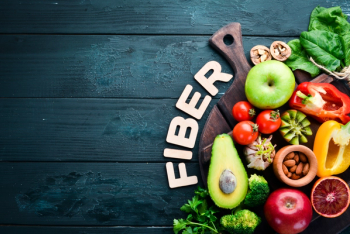
- Nutritional Outlook Vol. 25 No. 7
- Volume 25
- Issue 7
In the Mix: Solving issues with dispersion of fruit powders in liquid
When formulating beverages using fruit powders, dispersibility is a key consideration.
Fruit powders can give beverages authentic flavor, color, and nutritional value, creating a healthy halo that draws in customers interested in “natural,” clean-label products. When formulating beverages using fruit powders, however, dispersibility is an important quality to consider.
First, Melanie Bush, vice president of science and research at Artemis International (Fort Wayne, IN), explains the distinction between solubility and dispersibility when formulating liquid applications. “If a fruit powder is not soluble, it is because it contains insoluble material, like pulp or unfiltered particles, that were in the juice when it was dried. Perhaps the more relevant descriptor for formulating liquid applications is its ‘dispersibility,’ meaning how well the fruit powder can uniformly distribute in solution,” explains Bush. “Think of it in terms of how easy or hard it is to get the product into solution.”
“The distinction,” she adds, “is important because you should ultimately be able to get any soluble fruit powder into solution, provided that it doesn’t contain actual insoluble material, with enough high-speed mixing. But some are definitely harder to mix than others.”
Then there’s consumer preference. While insoluble materials, like pulp, may denote to some consumers that the product is natural, most mainstream consumers may find floating particles in liquid unappealing. Removing insoluble materials solves the solubility issue to make a more attractive product.
A number of factors may still affect the dispersibility of a fruit powder in solution. Particle size is one factor that may impact how well a fruit powder mixes into liquid. Ironically, the smaller the particle size, or the finer the powder, the more difficult it can be to dissolve in liquid. “This occurs because the surface area is larger, so it takes up water too fast to form clumps and tends to float on the surface instead of dissolving rapidly,” says Bush. “Partially agglomerating powders to create larger particles can help make them easier to dissolve.”
That is not to say the powder won’t dissolve; it just may require more vigorous mixing or other dispersion methods. Keep in mind, however, that vigorous mixing may cause foaming, especially when mixing concentrated solutions, says Bush. This becomes less of an issue when using more water in the formula, but when making a concentrated solution, it may help to premix powders with something more soluble such as propylene glycol or even just sugar to slow down the absorption rate to make the powder easier to mix, she suggests.
The same considerations should be made for powders being sold to consumers for dispersion in at-home or on-the-go beverages, with the added precaution against hygroscopicity. Fruit powders that contain high levels of hygroscopic sugars such as fructose are known to absorb moisture from the air and clump. “Vacuum packaging can help somewhat but becomes a challenge for partially opened or resealable packages,” says Bush. “Many manufacturers need to mix fruit powders with a carrier like maltodextrin, or substances like calcium silicate, to help combat this problem.”
While the particle size and agglomeration don’t impact the nutritional value of a fruit powder, the addition of excipients such as maltodextrin may affect the strength of the product. Formulators should therefore take that into consideration and use the right amount of fruit powder to achieve the desired level of active ingredients in the finished product, says Bush. “Also, if heat is used to aid in the dispersion of a fruit powder, formulators should note that prolonged high heat can be detrimental to the stability of certain bioactives in fruit like anthocyanins [red-purple-black color pigments],” she adds.
Articles in this issue
about 3 years ago
The mineral supplements market is rock solid in 2022about 3 years ago
Flex time: Joint health supplements are more popular than everover 3 years ago
Do mushroom species work better when combined?over 3 years ago
Will climate change hurt the botanicals industry? It already is.Newsletter
From ingredient science to consumer trends, get the intel you need to stay competitive in the nutrition space—subscribe now to Nutritional Outlook.





